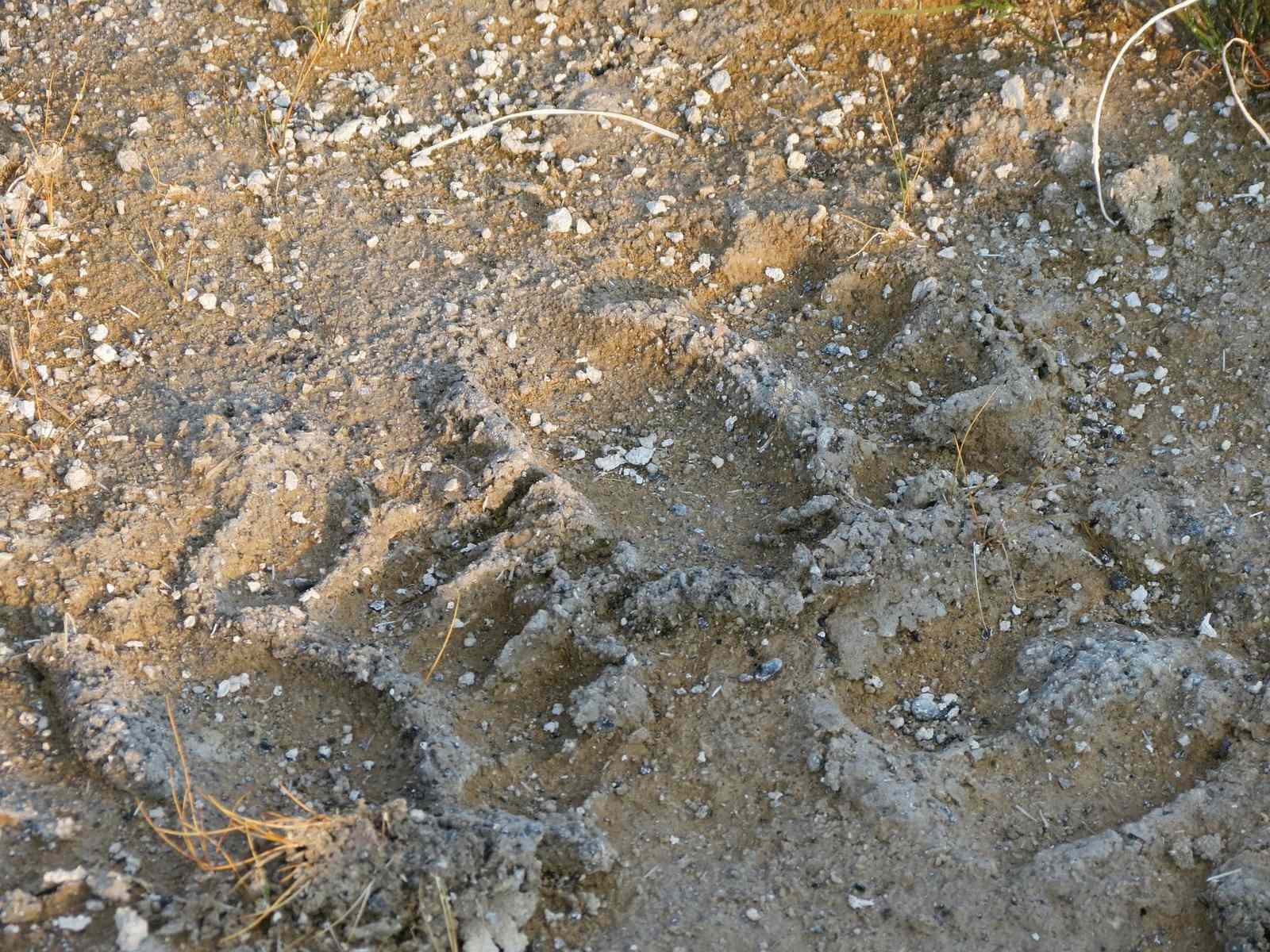Published April 8, 2019
The leaves are changing colour, the land around the Great Lakes is soft, and many animals are scurrying around, preparing for the long winter ahead. Now is the time to get out to the lakes for a walk along the nearby trails. But this time, aim your eyes at the ground.
What do you see?

There are so many animals that call the Great Lakes home. There’s a good chance that you will see some animal tracks along the muddy trail.
But what made those tracks? Can you tell the difference between a pug print and a porcupine print?
Each paw/hoof print is different. Here is a simple guide for identifying those unique shapes. Save these images to your phone so that you can have them with you on your next walk.

The 4 main gaits:
First step: you’ve gotta think like an animal. Let me explain…
Imagine you’re a raccoon. Your stealthy little paws press into the dirt and your chubby bum wiggles behind you as you search for food on the edge of Lake Ontario. Understanding an animal’s walking pattern, or gait, will help you distinguish between paw prints.
There are four common walking patters adopted by animals that live around the Great Lakes.
1
Waddlers
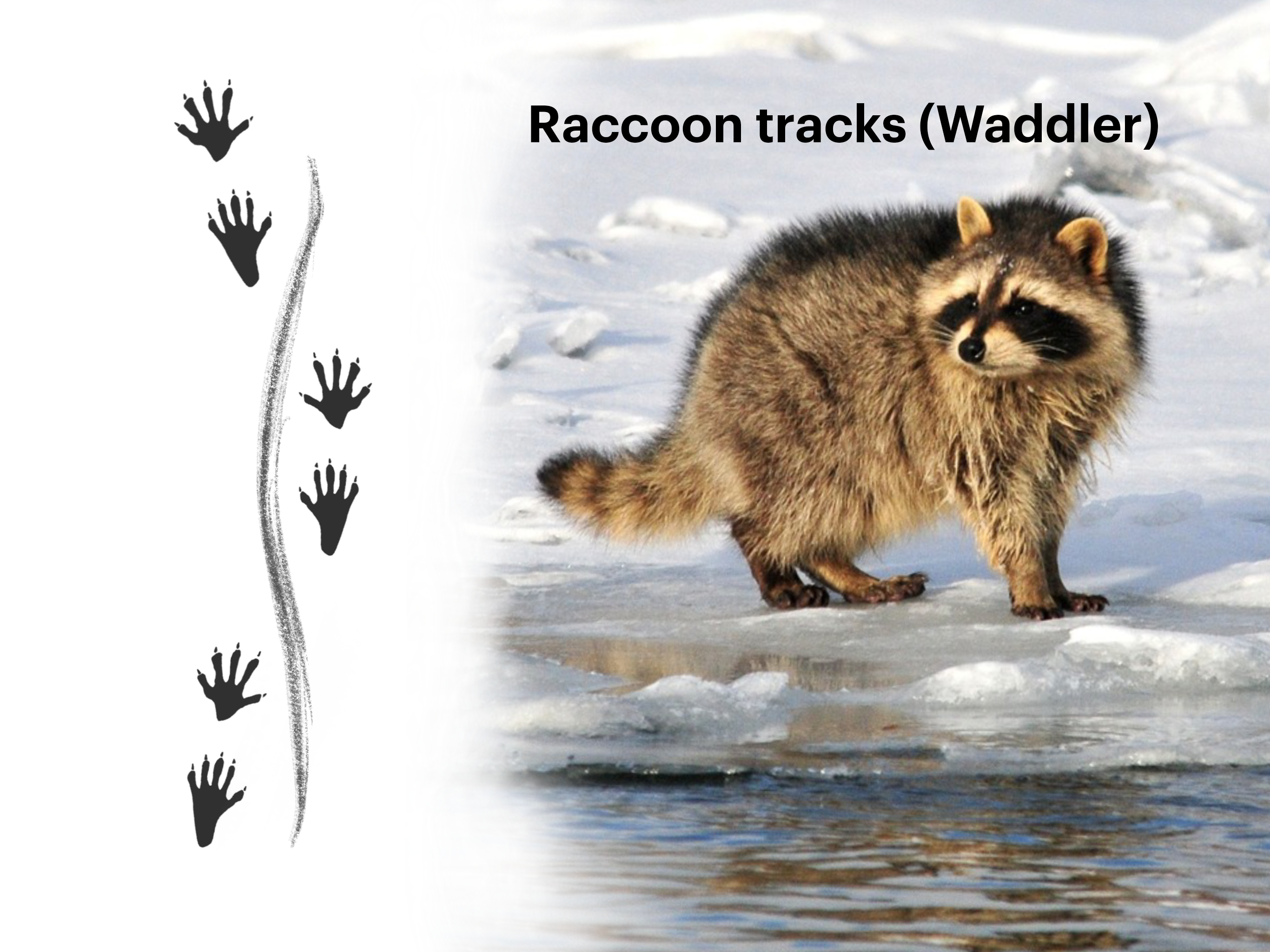
Let’s stick with the raccoon as an example. The raccoon is a “Waddler.” Waddlers… well… they waddle. Their body appears to sway side-to-side as they walk, as if they’ve eaten too much Sunday lunch. Their tracks are composed of four independent footprints and they often leave behind drag marks, from dragging their bellies as they walk.
Examples of Waddlers: Raccoons, Bears, Skunks, Beavers, Porcupines

2
Perfect Walkers
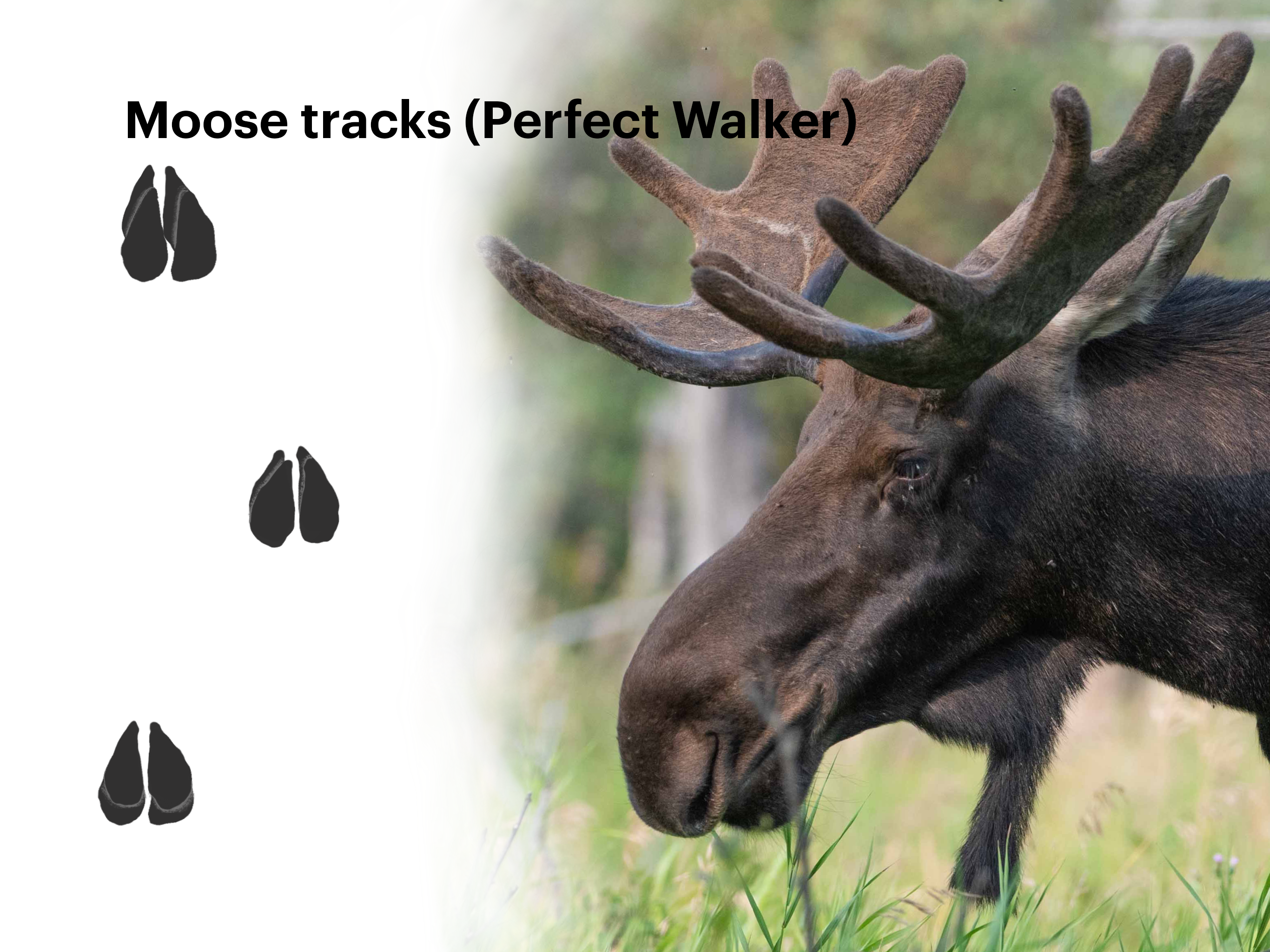
Next, let’s imagine we are the majestic Moose, standing tall and slowly walking along the shores of Lake Superior. We Moose are “Perfect Walkers” (ooh la la). This means that our rear paw (or hoof) lands exactly in the spot where our front paw was previously.
Animals with this gait are also known as “Zig-Zaggers” or “Diagonal Walkers,” since they leave behind a zig-zag pattern by moving the opposite sides of their body simultaneously.
Examples of Perfect Walkers: Moose, Deer, Foxes, Coyotes

Did You Know?
3
Bounders
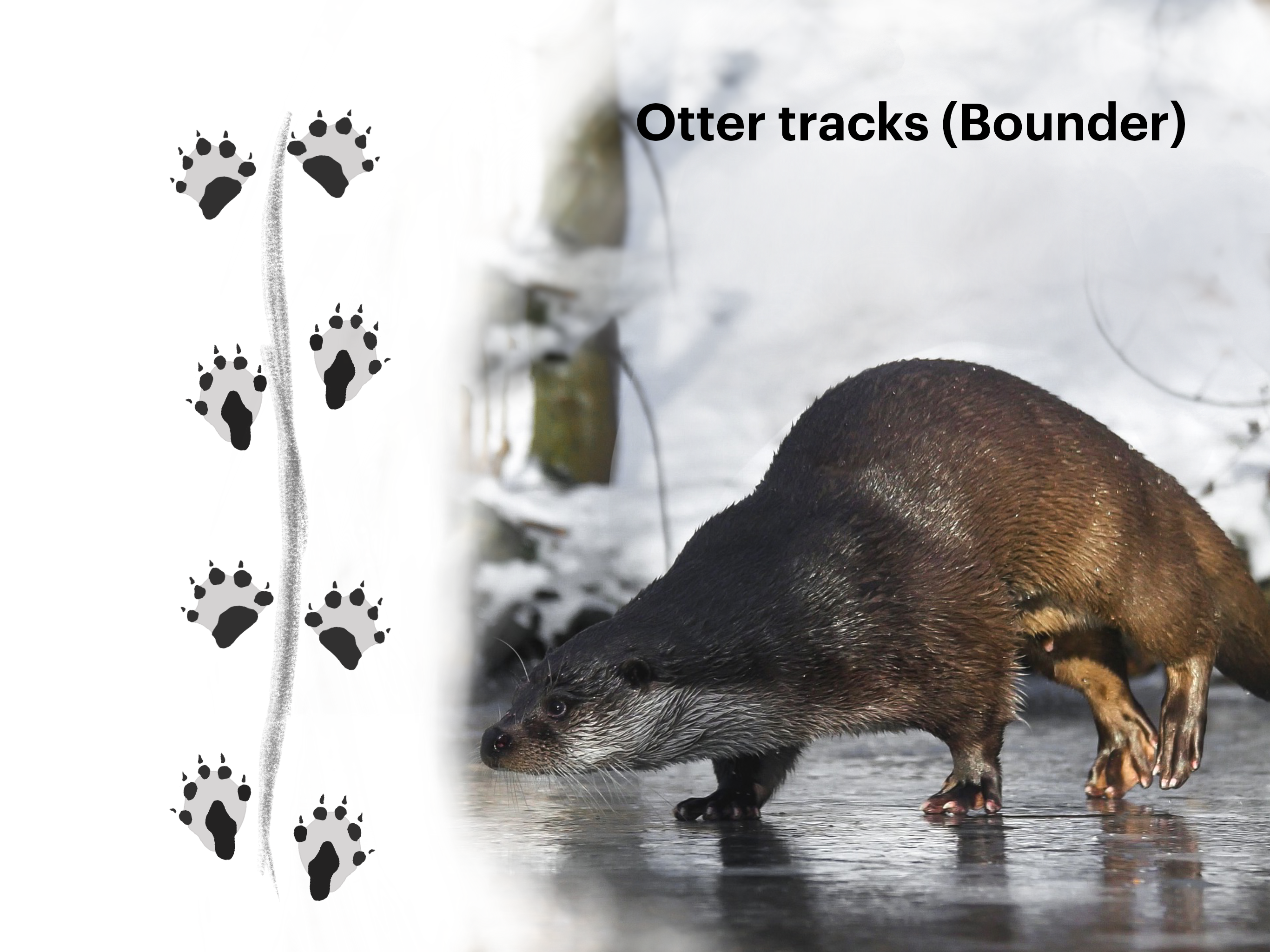
Then we have the “Bounders,” not to be confused with the “Hoppers.” Bounders leap forward and, much like the “Perfect Walkers,” their rear paws land near the prints left behind by their front paws. They leave behind tracks that often appear as only two paws, side-by-side. You are most likely to see these pawprints close to the water’s edge, since they are made by mostly water-loving creatures.
Examples of Bounders: Otters and Weasels
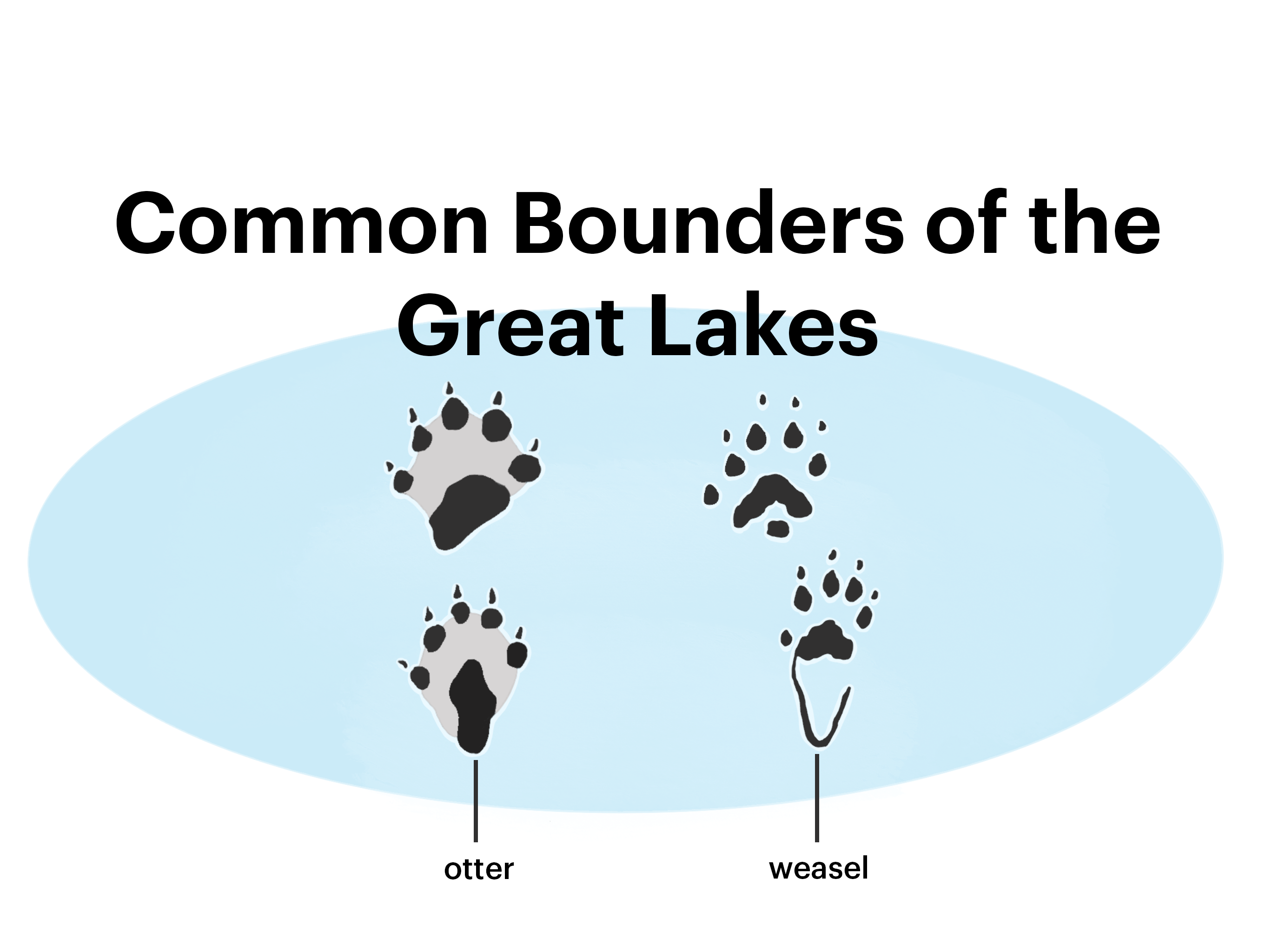
4
Gallop Walkers

Finally, our little hopping friends. “Gallop Walkers”, or “Hoppers,” leap into the air, landing with their rear paws slightly ahead of their little front paws, on a diagonal. You might imagine yourself as the common Cottontail Rabbit hopping around in your backyard. Many other small critters also have this gait.
Examples of Gallop Walkers: Rabbits, Squirrels, Chipmunks
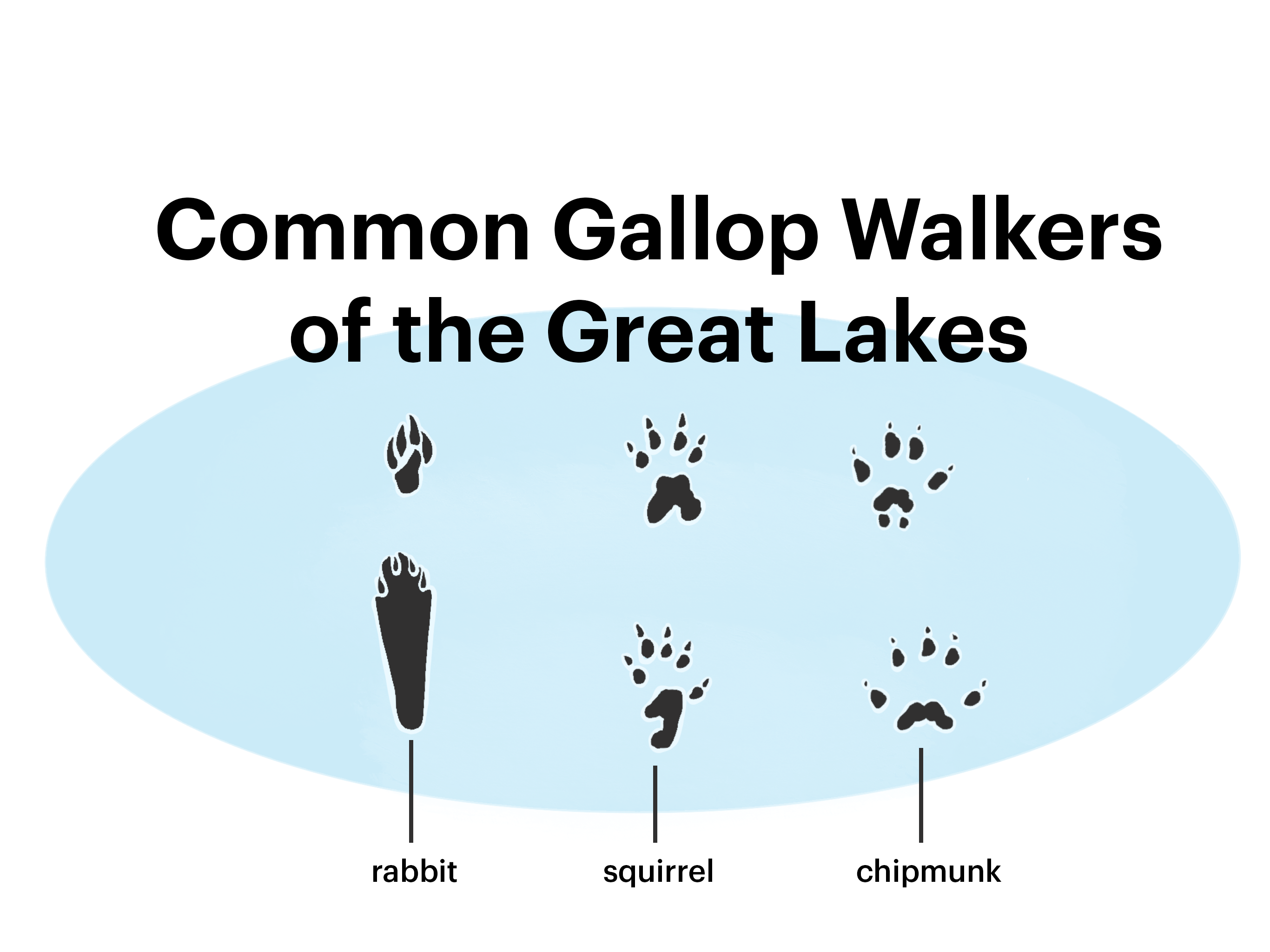
Did You Know?
No matter where you find yourself in this region, no matter which Great Lake is your lake, you can be sure that there are millions of animals that also call that spot “home.” Spotting animal tracks is exciting. Lots of animals mean a healthy ecosystem, and that is something that we all want to see.
“We see moose and deer tracks each morning. There are loons, wolves, and all manner of wildlife.”
Did you stumble across some mystery tracks?
I recommend purchasing Animal Tracks of the Great Lakes for those looking to hone their tracking skills and discover more Great Lake creatures.
